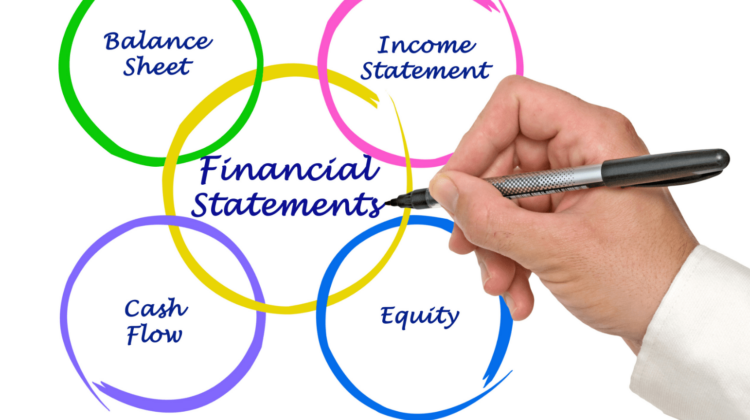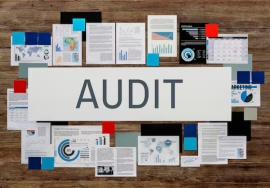
How to Prepare a Financial Statement for Your Small Business Like a Pro
Managing your small business finances effectively is key to long-term success. One of the most important financial tasks you’ll need to master is preparing a financial statement. Whether you’re looking for investors, applying for a loan, or simply keeping track of your company’s financial health, having clear and accurate financial statements is crucial.
In this guide, we’ll break down the process of creating financial statements like a pro without needing an accounting degree!
What is a Financial Statement?
A financial statement is a formal record of your business’s financial activities. It provides insights into your company’s profitability, cash flow, and financial position, helping you make informed business decisions.
There are three main types of financial statements:
- Income Statement (Profit & Loss Statement) – Shows revenue, expenses, and profit or loss over a specific period.
- Balance Sheet – Provides a snapshot of your business’s assets, liabilities, and equity at a given time.
- Cash Flow Statement – Tracks how cash moves in and out of your business.
Step 1: Gather Financial Data
Before you start, ensure you have all the necessary financial records, including:
✅ Sales records
✅ Expense receipts
✅ Bank statements
✅ Payroll reports
✅ Loan or debt details
Using accounting software like QuickBooks, FreshBooks, or Wave can make this step easier.
Step 2: Prepare the Income Statement
The income statement (also called a Profit & Loss Statement) tells you whether your business is making money or losing it.
Formula:
📌 Net Income = Revenue – Expenses
How to Create It:
- List your revenue (sales, services, etc.).
- Subtract the cost of goods sold (COGS).
- If you sell products, include costs like materials and manufacturing.
- Deduct operating expenses (rent, salaries, marketing, utilities, etc.).
- Account for additional income or expenses (interest, taxes, etc.).
- Calculate your net profit (or loss).
➡️ Example: If your business made $100,000 in sales, spent $40,000 on costs and $30,000 on other expenses, your net income is:
💡 $100,000 – $40,000 – $30,000 = $30,000 profit
Step 3: Create the Balance Sheet
The balance sheet shows what your business owns (assets), what it owes (liabilities), and the value left for the owners (equity).
Formula:
📌 Assets = Liabilities + Equity
How to Create It:
- List your assets (cash, accounts receivable, inventory, equipment, property, etc.).
- List your liabilities (loans, credit card debt, accounts payable, etc.).
- Calculate your equity (owner’s investment + retained earnings).
➡️ Example:
- Assets: $50,000 (Cash) + $30,000 (Equipment) = $80,000
- Liabilities: $20,000 (Loan)
- Equity: $60,000
Since Assets = Liabilities + Equity, our equation holds: $80,000 = $20,000 + $60,000 ✅
Step 4: Generate the Cash Flow Statement
The cash flow statement tracks how cash moves in and out of your business. It helps you understand liquidity—how much cash is available to cover expenses.
3 Sections of a Cash Flow Statement:
- Operating Activities – Cash from sales, payments to suppliers, salaries, etc.
- Investing Activities – Purchases or sales of equipment, investments, etc.
- Financing Activities – Loans, repayments, owner investments, etc.
How to Create It:
- Start with the beginning cash balance.
- Add cash inflows (sales, loans received, investments).
- Subtract cash outflows (expenses, loan payments, purchases).
- Calculate ending cash balance.
➡️ Example:
- Beginning Cash: $10,000
- Cash Inflows: $50,000 (Sales + Loan Received)
- Cash Outflows: $30,000 (Expenses + Loan Payments)
- Ending Cash Balance: $30,000
Step 5: Review & Analyze Your Financial Statements
Once your financial statements are prepared, take time to review and analyze them. Ask yourself:
✔️ Is my business profitable?
✔️ Do I have enough cash flow to cover expenses?
✔️ Are my assets growing over time?
✔️ Am I carrying too much debt?
Use financial ratios like:
📊 Profit Margin = (Net Profit ÷ Revenue) × 100 → Measures profitability.
📊 Current Ratio = (Current Assets ÷ Current Liabilities) → Measures liquidity.
📊 Debt-to-Equity Ratio = (Total Liabilities ÷ Equity) → Measures financial leverage.
Final Tips to Prepare Financial Statements Like a Pro
✅ Use Accounting Software – Automate reports and avoid errors.
✅ Stay Organized – Keep receipts, invoices, and bank statements in order.
✅ Reconcile Accounts Regularly – Match bank statements with financial records.
✅ Seek Professional Help if Needed – A CPA can help you stay compliant and optimize finances.








